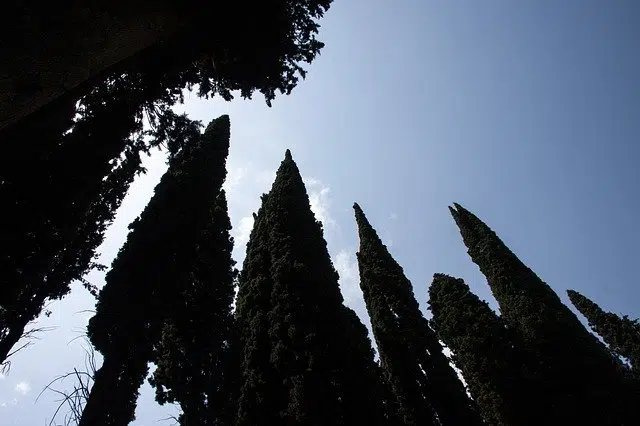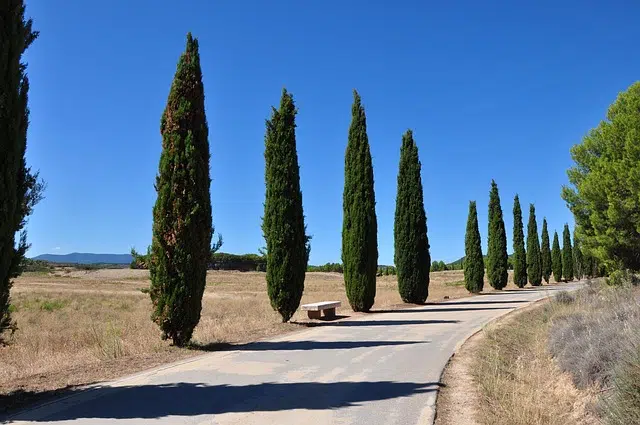
A cypress is a tree that belongs to the genus Cupressus.
Cypress is a term whose etymology is not entirely clear. According to the Royal Spanish Academy ( RAE ), it could come from the Occitan cypress , in turn derived from the late Latin cypressus .
A cypress is a tree that is part of the Cupressaceae family group. The concept refers to a genus that includes more than a dozen species.
Cypress characteristics
Beyond the differences between these species, all cypress trees share certain characteristics . As they are cupresaceae plants, they are also phanerogamous (their reproductive organs, which can be seen, are flowers in which fertilization takes place) and gymnosperms (as their carpels do not form a closed structure, the seeds lack a covering).
Like the rest of the Cupressaceae, cypresses also produce seeds with at least two cotyledons. Its flowers are unisexual, while its leaves have the peculiarity of remaining on the branches even after concluding their physiological function.
The height of the cypress, on the other hand, can reach 20 meters. The straightness of the trunks is another notable feature of these trees.

The height of cypress trees can be around twenty meters.
Different species
We said that cypresses constitute a genus, whose scientific name is Cupressus . The Swedish botanist Carlos Linnaeus ( 1707 – 1778 ) was the one who recorded it for the first time, describing it in his famous work known as “Species Plantarum” .
The species called Cupressus sempervirens and colloquially called common cypress is considered the type species of this group. Native to the Mediterranean , these trees can live for more than a millennium.
The Arizona cypress ( Cupressus arizonica ), Sahara cypress ( Cupressus dupreziana ), Himalayan cypress ( Cupressus torulosa ), and Bhutan cypress ( Cupressus cashmeriana ) are other cypress species .
Cypress wood
Cypress offers a wood that is highly valued in different areas. One of its most valuable aspects is its ability to resist humidity, which is why it is often used in the construction of boats and other structures that must be in contact with water.
Both carpentry and cabinetmaking use cypress wood. Guitars , ornamental veneers and multiple types of furniture are made with it.
Its symbology
For historical reasons and others associated with traditions and mythologies , the cypress has symbolic importance in several cultures. Christians, for example, believe that a fragment of cypress kept in the monastery of Santo Toribio de Liébana ( Spain ) formed part of the cross used in the crucifixion of Jesus .
It is often mentioned, on the other hand, that Noah's ark was built with cypress wood. It is even indicated that this wood was among those used for the construction of Solomon's Temple .
At different times the cypress was associated with funeral rites . That is why they were planted next to tombs and their branches were placed on doors as a sign of mourning.
Other uses of the term cypress
In Mexican religious architecture, a structure similar to the baldachin (the pavilion used to cover the altar ) is called a cypress. The cypress, in this sense, is supported by columns and integrates the main altar.
The cypress pear , finally, is a variety of the fruit obtained from the common pear tree ( Pyrus communis ). Its flesh is whitish and its flavor is sweet but very mild.
